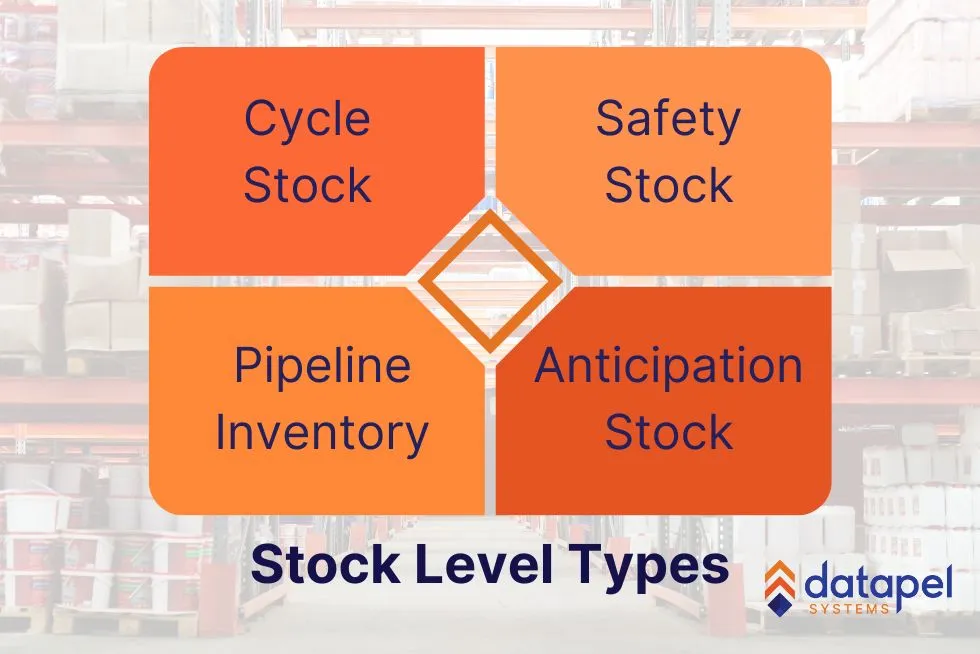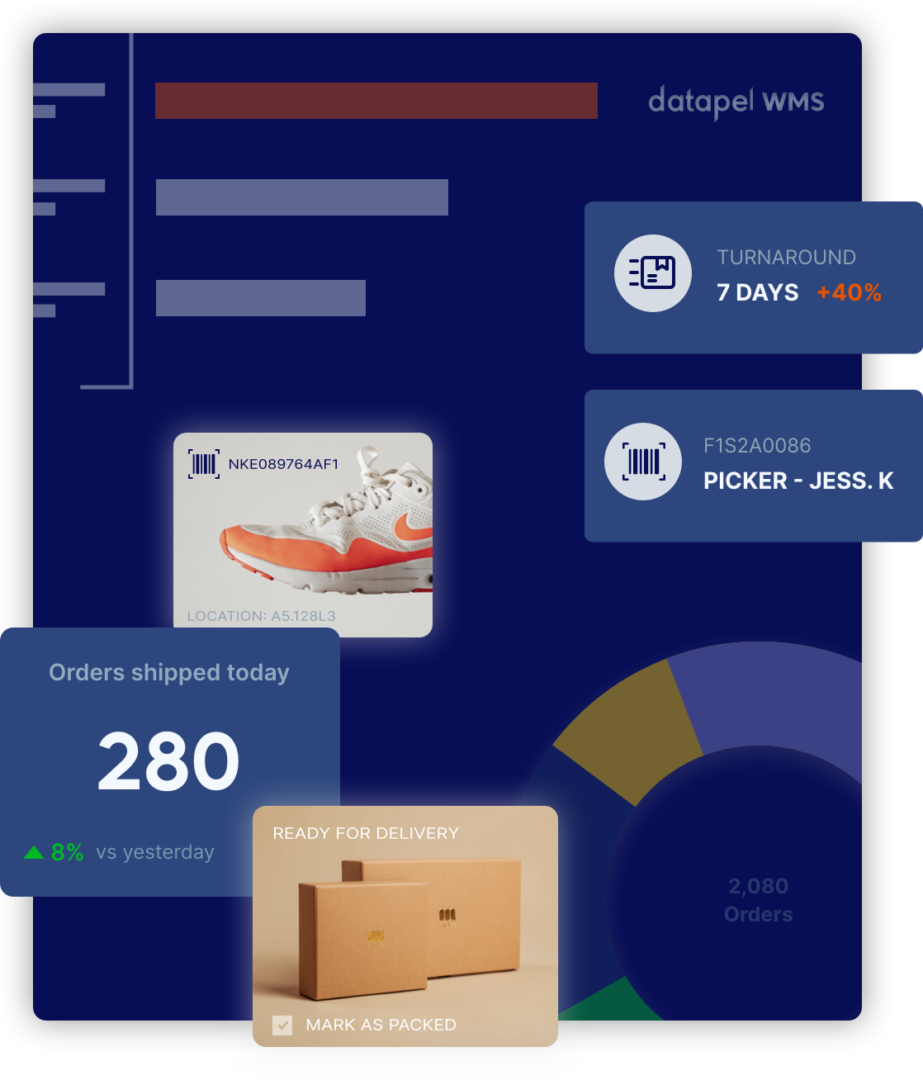Optimal Inventory Levels for Manufacturers: Strategies for Success
Contents
Every manufacturing business faces the same challenge—holding enough inventory to meet production demands without tying up too much capital in excess inventory. Too much stock inflates storage costs and risks obsolescence, while too little causes production delays and unhappy customers.
Getting the balance right isn’t just theory—it has real-world impacts on your cash flow, efficiency, and ability to meet customer demand. In this guide, we’ll walk you through key factors influencing inventory levels for manufacturers and how to take control using smart, practical strategies.

Managing optimal inventory levels directly impacts production efficiency and profitability.
What is Manufacturing Inventory Management?
Manufacturing inventory management is the process of planning, organising, and controlling raw materials, work-in-progress (WIP) inventory, and finished goods through every stage of the manufacturing process.
It’s more than just stock control—it’s about ensuring the right materials are available at the right time, keeping production lines moving without unnecessary stockpiles or shortages. Effective inventory management supports smoother manufacturing operations, reduces inventory costs, and improves customer satisfaction.
Why Manufacturing Inventory Management Matters
Poor inventory control creates ripple effects:
- Capital gets locked up in unused stock.
- Warehousing and transportation costs rise.
- Customer orders may be delayed or missed.
- Your ability to meet future demand is compromised.
On the flip side, implementing efficient inventory management improves cash flow, enhances production efficiency, and keeps customers happy.
Core Inventory Management Processes for Manufacturers
To maintain strong inventory control, manufacturers rely on key processes:
- Demand Forecasting: Predict future sales and production needs to avoid overstocking or shortages.
- Procurement: Secure raw materials from trusted suppliers with reliable lead times.
- Inventory Tracking: Use real-time tools to monitor stock levels, movements, and locations.
- Production Scheduling: Align production plans with available inventory and market trends.
- Inventory Control Techniques: Set reorder points, manage safety stock, and minimise storage space use.
- Inventory Optimisation: Regularly analyse inventory data to fine-tune stock levels, cut excess inventory, and lower production costs.
The Cost of Getting Inventory Levels Wrong

Holding too much or too little stock affects both cash flow and customer loyalty.
Holding Too Much Inventory:
- Capital tied up in raw materials or finished goods that could be better used elsewhere.
- Rising storage costs, insurance, and handling fees.
- Higher risk of stock obsolescence, spoilage, or waste—especially in industries with perishable goods.
Holding Too Little Inventory:
- Production halts due to material shortages.
- Missed customer orders and revenue.
- Damaged customer satisfaction and brand reputation.
Key Factors Influencing Optimal Inventory Levels
1. Demand Forecasting Accuracy
Accurate demand forecasting is essential. Overestimating leads to excess inventory and increased carrying costs, while underestimating causes stockouts and production delays.
Datapel integrates production schedules with real-time inventory tracking, helping you forecast demand precisely. Whether you’re managing raw materials inventory or finished goods, our tools support smarter stock allocation.
Stay updated on Australian manufacturing trends that influence demand forecasting.
2. Supplier Lead Times & Reliability
Long or inconsistent supplier lead times often force manufacturers to carry higher safety stock—tying up capital unnecessarily.
Datapel gives you visibility into supplier performance, letting you dynamically adjust stock buffers based on lead times and reliability—without risking production delays.
3. Production Complexity
Multi-stage production runs, work orders, and recipe blends complicate inventory processes. Without clear visibility, it’s easy to lose track of how much inventory is committed to production vs. available for sale.
Datapel’s Work Order Management ensures you can progressively receive inventory as production advances, improving visibility and production efficiency.
4. Traceability & Quality Control
Compliance checks and scattered paperwork can cause inventory bottlenecks.
With Datapel, quality control documents and test results are attached directly to batches and work orders, streamlining audits and improving your inventory management practices.
What Are the 4 Inventory Stock Levels?
Understanding stock levels is key to effective control:
- Cycle Stock: Regular inventory needed to meet normal production demand.
- Safety Stock: Buffer stock held to cushion against supply chain disruptions.
- Pipeline Inventory: Stock in transit between supplier and manufacturer.
- Anticipation Stock: Extra inventory built up for seasonal or forecasted spikes in demand.

Knowing stock levels helps manufacturers avoid overstocking or stockouts.
What Are the 4 Types of Inventory Classifications?
Manufacturers typically deal with four inventory types:
- Raw Materials Inventory: Basic and natural materials used in production.
- WIP Inventory (Work-in-Progress): Items currently moving through the production process.
- Finished Goods Inventory: Completed products ready for sale.
- MRO Inventory: Supplies used to support manufacturing operations (e.g., tools, maintenance items).
Learn more about finished goods inventory and how to calculate it effectively.
Inventory Strategies: Just-in-Time, Just-in-Case, or Hybrid?
Choosing the right inventory strategy depends on the type of inventory and production risks:
- Just-in-Time (JIT): Keep inventory low, ordering only when needed. Minimises costs but risky with unreliable suppliers.
- Just-in-Case (JIC): Hold extra stock to cushion against supply chain disruptions. Offers security but increases inventory costs.
- Hybrid: Many manufacturers use both—JIC for critical raw materials, JIT for fast-moving finished goods.
Datapel supports all strategies with dynamic reorder triggers and real-time integrations.
Explore how to reduce warehouse clutter and stop overstocking without sacrificing customer satisfaction.
Safety Stock & Reorder Points: How Much is Enough?
Static reorder points increase human error risk. Many manufacturers struggle with manual stock monitoring.
With Datapel’s inventory management system, reorder points can be set based on:
- Historical inventory data and usage patterns.
- Supplier lead times.
- Safety stock thresholds.
Our system continuously recalculates reorder needs, freeing you from manual adjustments.
How to Improve Inventory Turnover in Manufacturing
Inventory turnover—how often stock is sold and replaced—shows how efficiently you’re managing inventory.
- Low turnover: Signals overstock and tied-up capital.
- High turnover: May indicate stockouts and lost sales.
Datapel’s reporting tools track your inventory turnover ratio, helping you make informed decisions about procurement and production.

Track turnover trends to balance stock levels and costs.
Get a detailed guide on calculating your inventory turnover ratio and what it means for your operations.
Inventory Management Cha
llenges in Manufacturing
Common challenges include:
- Inaccurate Demand Forecasting: Leads to either excess inventory or stockouts.
- Insufficient Inventory Visibility: Without real-time data, stock control becomes reactive.
- Manual Inventory Tracking: Increases errors and slows down decision-making.
- Supply Chain Disruptions: Delay availability of raw materials.
- Production Delays: Poorly managed inventory leads to bottlenecks and rising production costs.
Datapel’s inventory management software addresses these challenges—giving manufacturers control over stock, production, and procurement.
Best Practices for Manufacturing Inventory Management
- Conduct regular physical inventory counts.
- Integrate your inventory management system with accounting and procurement.
- Monitor production schedules and adjust stock based on market trends.
- Implement perpetual inventory management for real-time accuracy.
- Use advanced inventory management techniques like batch tracking and dynamic reorder points.
Acceptable Inventory Levels: How Much is Too Much?
There’s no one-size-fits-all answer. Acceptable inventory levels depend on:
- Demand variability.
- Supplier lead times.
- Production complexity.
- Storage capacity and storage costs.
- Cash flow requirements.
A good rule of thumb: Carry enough inventory to meet forecasted demand and buffer against disruptions, but avoid holding stock beyond what production and sales cycles justify.
What Are the Inventory Accounts for Manufacturers?
Manufacturers typically manage:
- Raw Materials Inventory Account
- WIP Inventory Account
- Finished Goods Inventory Account
- MRO Inventory Account
Accurate tracking of these accounts improves financial visibility and reduces the risk of stock mismanagement.
Boosting Cash Flow Through Strong Inventory Management
Your inventory strategy has a direct effect on cash flow. Excess stock ties up capital, while understocking leads to missed revenue.
Datapel’s integrated system improves inventory tracking, syncs procurement and production, and keeps your cash flow predictable.
Lean Manufacturing: Smarter Inventory Control
Lean manufacturing principles aim to reduce waste while maintaining production efficiency. Effective manufacturing inventory management strategies help manufacturers:
- Minimise excess inventory.
- Keep inventory costs low.
- Enhance production flexibility.
- Improve customer satisfaction.
Assess Your Manufacturing Inventory Management Strategy
Every manufacturing business has unique inventory needs—but the fundamentals remain constant. The right approach to managing inventory helps you:
- Reduce unnecessary stock.
- Improve production flow.
- Strengthen customer satisfaction.
- Free up working capital.Discover the benefits of implementing an inventory management system tailored to your manufacturing business.
Ready to reassess your inventory strategy? Speak with a Datapel expert today and discover how better inventory control drives profitability.

Take control of your inventory strategy and improve your bottom line.
Discover Datapel’s Manufacturing Software

In my role, I oversee the development of insightful blogs that delve into the intricacies of warehouse management. Each piece reflects my dedication to empowering businesses through informative content. Through my team’s extensive experience in the industry, we aim to bring clarity to the complexities of WMS, helping businesses make informed decisions.
Join me on a journey through the ever-evolving landscape of warehouse technology as we explore the latest trends, industry insights, and practical tips to streamline your operations. Feel free to connect, and let’s embark on a collaborative exploration of how WMS can redefine your business efficiency.
Cheers to innovation, efficiency, and the exciting world of warehouse management!







